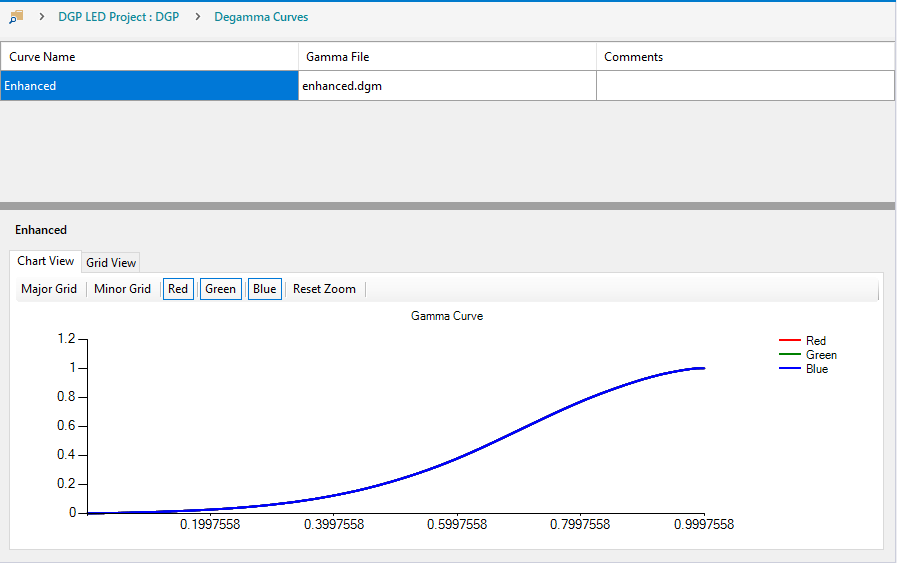DLPU106A March 2021 – October 2021 DLP3021-Q1
5.1.4 Degamma Curves
This page allows the use to select one of five different gamma profile curves that apply identically to all three RGB channels:
enhanced.dgm – Enhanced: More bits allocated to low light levels where steps in brightness are more noticeable to human perception. Recommended for full range of brightness intensities.
enhphoto.dgm – Enhanced Photo: Same as Enhanced with a more linear mapping in the high brightness range.
linear.dgm – Linear: Pass through of input to out pixel intensity where pixel intensity remains unchanged. Recommended for high brightness content.
maxbright.dgm – Same as enhanced, but steeper slope to reach high brightness content saturation sooner. Recommended for binary content that is a combination of very low and high brightness content as middle range resolution is reduced.
photo.dgm – Photo: More bits allocated to low and medium light levels. Recommended for content where high brightness is less of a priority.
 Figure 5-4 DLP Composer - Degamma
Curves
Figure 5-4 DLP Composer - Degamma
CurvesGamma correction is a method of adjusting the mapping of input to output pixel intensity levels that is generally used to account for visual perception of brightness. This process is common to most display and camera systems. The human visual system does not perceive light intensity linearly. Humans are more capable of perceiving fine brightness differences in low light intensity levels than they are in bright intensity levels. Therefore, source video content is typically gamma encoded to optimize bit allocation by providing more bits to low light levels where steps in brightness will be most noticeable. Then, the display will apply a corresponding de-gamma curve to decode the input bits into corresponding display brightness.
See the DLP5531-Q1 Chipset Video Processing for Light Control Applications (DLPA101) for additional details on the effects of gamma curves.